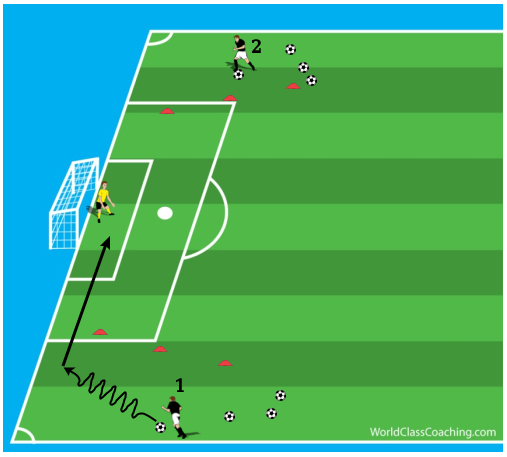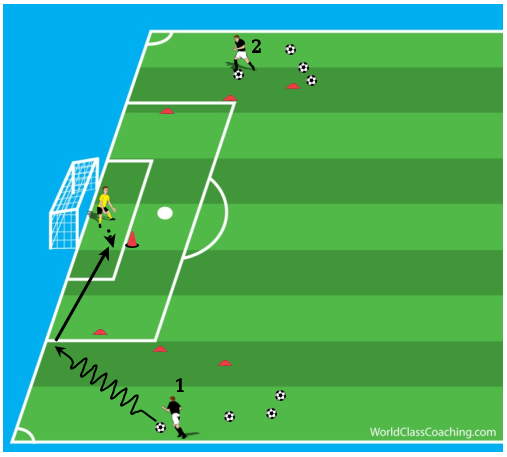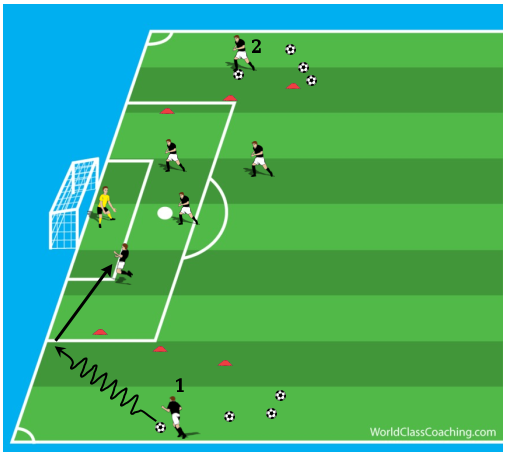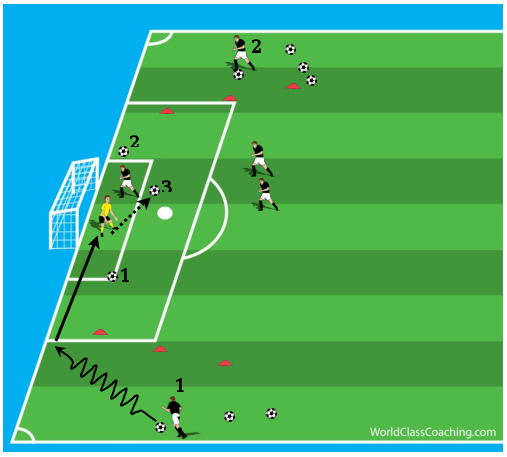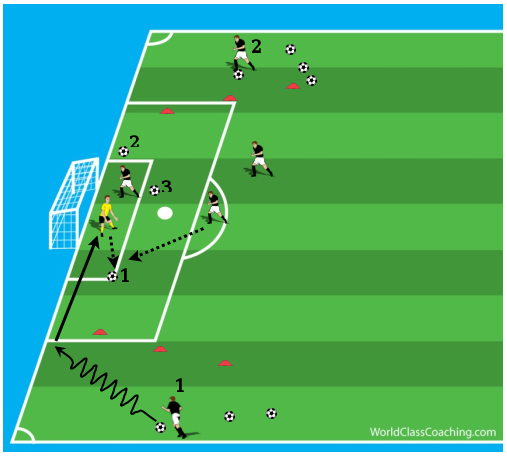By Tony Englund -
Among the more challenging tactical teaching topics for goalkeepers is helping them to control their area. There are numerous moments in the game when the goalkeeper’s ability or inability to eat up loose balls in the area can swing control of the game to one team or another. Crosses, through-balls and balls that fall loose to the ground in the area when the opponent is attacking all present challenges, as do back-passes when the ‘keeper’s own team is in possession. This article will take a look at the crossing and covering topics, and the next article (#2) will examine back-passes.
Dealing with Crosses
Because of the number of variables in any crossing situation (location of crosser; type and location of cross; number, angles and distance of potential defenders and finishers; weather (i.e. wind, rain) and the goalkeeper’s ability and confidence level), all will react differently in crossing situations. That said, our goal as coaches must be to teach goalkeepers to read these variables at training and try to increase the ability of our goalkeepers to be decisive and successful in coping with crossing situations. Below is a simple exercise with numerous variations and teaching points to help the coach work with the goalkeeper in dealing with crosses.
Procedure:
- Players 1 and 2 alternate serving balls into the area for the goalkeeper to receive. Encourage the players to vary the flight and distance of their serves and to sometimes attack along the end line to force the goalkeeper to deal with varying serve lengths and protect his near post.
Coach:
- Starting position: On a wide cross, the goalkeeper should start near the middle of the goal and just off of his line (see above). For more advanced and older goalkeepers, a step or two toward the far post is advisable, as it’s easier to move forward than backward to deal with a serve.
- Posture: The goalkeeper needs to adopt an open stance, with the up-field foot pointing toward midfield. This is both a reminder to open up and look for the ball and runners and also saves a step with the ‘keeper opts to go after a ball.
- Before the ball is served, take a look up the field to see if there are runners approaching, then focus on the ball.
- Make an early call. A call must be made every time, either “’Keeper!” or “away!”. As a general rule, we want goalkeepers to deal with balls that arrive in the six yard box between the posts.
- Go confidently to and through the ball or prepare to deal with an attempt to finish the cross. Skills including catching high balls, high tipping, punching and boxing should all be part of the technical program to help goalkeepers have an array of methods for dealing with crosses.
• On near post crosses and when there is a cross from in tight on the goal line, it is useful with more experienced goalkeepers to teach them to think in terms of defending two goals, both the standard goal and an imaginary goal stretching from the near post to the top of the six yard box or beyond (see diagram). This added visual encourages the goalkeeper to be aggressive in cutting our service into this dangerous area.
Progression:
- Add a group of finishers who attack in varying numbers with each serve. The goalkeeper must call out the number of attackers before dealing with the serve. This compels the goalkeeper to take a look at the attacking picture and helps him decide how aggressive he can be.
- Add several numbered balls in the area. After the goalkeeper deals with a cross, the coach calls out a number and the ‘keeper must immediately cover the ball. This progression compels the goalkeeper to get off of his line and cover a loose ball or rebound in the area.
- When the goalkeeper deals with a cross and the coach calls out a numbered ball to cover, a player races from the ‘D’ to try to beat the goalkeeper and finish. This variation adds some pressure and realism for the goalkeeper.
- Another useful variation is to add a defender or two to the exercise at this stage. The defenders are only active on the original cross and must work with the goalkeeper to defend the crosses. This variation adds traffic for the goalkeeper to sort through and also familiarizes the defenders and goalkeepers to closing down the area. Emphasize that the goalkeeper must make an early call as to whether he will handle the cross.
- A final and fun variation is to add a second goalkeeper to any or all stages in this progression. Both ‘keepers try to secure every cross, adding competition and traffic to the environment.
As always, adjust the exercises to fit the abilities and needs of your goalkeepers.
By Tony Englund - Holds an NSCAA Premier License and 11 other diplomas. Tony has presented goalkeeping clinics for the NSCAA and is the author of six books including: Goalie Wars! and Art of the Duel

